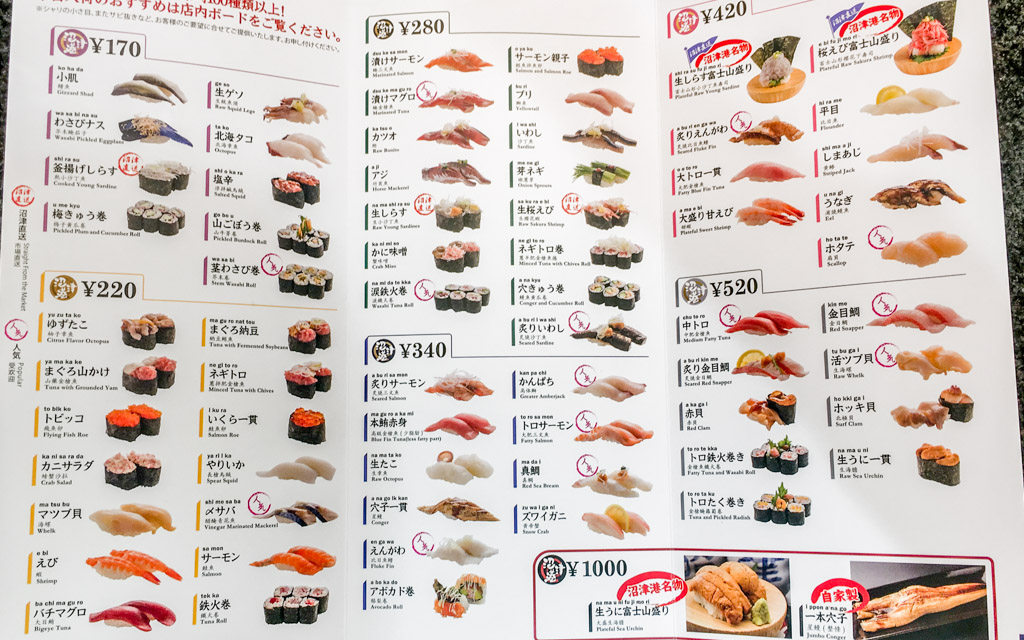A Beginner’s Guide To Sushi Menu – Have you stayed away from sushi thinking that they are meant for the blessed Japanese tummies only or those who understand the culture? Oh! You’ve missed so much. It’s about time to come out of your cocoon and discover the exotic flavors of this oriental cuisine. After all, how long can you live on burgers and pizzas anyway?
If you find sushi confusing and wonder what to expect on the menu, you have come to the right place. In this beginner’s guide to the sushi menu, we will tell you about the different types of sushi, and what to order if you are a beginner, a pure vegan, or on a gluten-free diet. You won’t even need online class takers to figure this out for you after you’ve read our guide. After you equip yourself with the information below, you will feel more confident to walk into a sushiya and place your order. Read on to find out the types of sushi options you can find on the menu.
Table of Contents
Types of Sushi On The Menu
The word sushi may bring you images of fish over a bed of oval-shaped rice or a piece of roll revealing rice, fillings and nori sheet (seaweed) outside. While these two are definitely the most popular sushi options available, it’s just the tip of the iceberg. There are so many other types of sushi you can discover and enjoy.
If you are a sushi beginner, the names of the menu may appear confusing to you because you are unfamiliar to them. So, here I have listed some of the most popular types of sushi options you can find in any typical sushi restaurant’s menu.

Credits: The Travel Mentor
Nigiri: This is the original and most traditional style of sushi rolls that have existed for centuries. It comprises an oval bed of seasoned rice topped with raw fish, seafood, or vegetables. When you order nigiri, you will be served two pieces on a plate.
Maki Roll: These are the traditional Japanese rolls prepare by rolling a layer of sushi rice with different varieties of fish or vegetables inside. It has nori or seaweed on the outside. The roll is formed in the shape of a circular tube and then cut into bite-size pieces.
Uramaki Roll: Also known as the inside-out roll, these are Americanized sushi rolls that are rolled in a different way with nori sheet hidden inside and rice on the top. They are usually decorated with toppings over the rice to make it an appetizing treat.
Temaki rolls: Also known as the hand rolls, these are cone-shaped sushi with nori sheet folded like a cone. They contain seasoned sushi rice and a variety of fillings inside. They are called ‘hand roll’ because they can be easily eaten with hands instead of using chopsticks.
Sashimi: This is technically not sushi because it does not comprise of rice or nori, but you will find sashimi in the menu at almost every sushi restaurant. The dish contains finely sliced pieces of high-quality sushi-grade raw fish or seafood served with soy sauce.
Tekka Maki: Often referred to as mini maki rolls, there are small-sized sushi rolls that come with only one ingredient inside. The ingredient may be cucumber, maguro (tuna), or takuan (pickled vegetable). As a sushi beginner, consider starting with a cucumber tekka maki to test the waters.
Common Fish And Seafood In A Sushi Menu
Many people believe that sushi means fish and there’s a reason behind that misconception. Although sushi does not mean just raw fish, it forms an integral part of the cuisine. Interestingly, any type of fish (raw or cooked) can be used as an exotic ingredient.

Credits: The Travel Mentor
Some of the most common fish options used in sushi rolls are tuna, swordfish, eel, sweetfish, tuna, salmon, yellowtail, seabass, mackerel, blue marlin, swordfish, trout, flatfish, and so on. Besides fish, several varieties of seafood are also used in sushi and examples are crab, octopus, shrimp, abalone, clams, and scallop.
Sometimes the same ingredient may be referred by different names, so if you don’t understand or recognize the type of fish in your nigiri or roll, ask the server. To be on the safe side, order some of the common and familiar options such as tuna, salmon, or trout.
If you are excited about eating raw fish or find it gross, ask the server to serve you a sushi roll that contains cooked fish. There are many options that include cooked fish or seafood along with veggies, so there is no dearth of cooked sushi to order. The fish in such recipes may be steamed, boiled, grilled, or baked.
Furthermore, you are not just limited to fish and seafood, as sushi fillings may include chicken, sweet egg omelet, beef, fish eggs, or horse too. Ask the server to brief you about the non-fish options available for sushi.
Vegetarian, Vegan, And Gluten-free Options
I know many people who think sushi is an exclusive food for those who eat fish and I really pity them! Yes, you don’t have to be a seafood eater to be able to enjoy the rich flavor of seasoned sushi rice, nori, and the fillings. There are more veggie sushi options on this planet than you can count on your fingers.
In fact, the traditional maki roll contains only strips of Japanese cucumbers rolled inside sushi rice and seaweed. The vegetables can be used as it is or they may be steamed, boiled, marinated, pickled or baked to enhance the taste.
If you like making sushi at home, there are countless vegetarian sushi recipes you can try at home. Besides vegetables, you can also use fruits such as avocado, mango, strawberry, and many more for fillings.
If you are vegan, ask the server for some pure vegan options and they will be happy to help. Some common fillings include guacamole, spinach, shitake mushrooms, grated carrots, and seasoned tofu. Once you get a taste of vegan sushi rolls, you will be amazed at how appetizing this dish can taste even without fish or seafood.
Voir cette publication sur Instagram
Another special consideration is for those on a gluten-free diet. Well, dining outside at any restaurant is slightly challenging for people who have celiac disease but thankfully there are sushi restaurants that offer gluten-free food.
Remember to always ask questions to the server or chef to ensure whether or nor they serve gluten-free sushi and carry your own tamari (gluten-free soy sauce) to be on the safe side. Looking up on Google and reading online customer reviews before heading to a restaurant can save you the headache. When on a gluten-free diet, stay away from anything on the menu that says deep-fried or marinated.
The Best Sushi Options for Beginners
A beginner’s guide to the sushi menu is incomplete until we talk about the most popular sushi options you must explore when starting out. Sushi rolls are the safest options as they contain different types of ingredients, unlike sashimi which is only raw fish.
When you visit a sushi restaurant for the first time, let the chef or server know that you are a beginner so that they can help in making your experience wonderful. It’s always suggested to start with lighter options and then slowly proceed with the heavier and fattier ingredients.

Credits: Tokyo Cheapo
If you are not a fan of raw fish or you are on a special diet, let the server know beforehand so that they can help you with options that are more suitable for you. For beginners who are clueless about what to order, here are a few options you can try and chances are you will love it.
- California Roll: Cooked crab/ Imitation crab (surimi), avocado and cucumber.
- Shrimp tempura roll: Contains deep-fried shrimps, avocado, and cucumber
- Philadelphia Roll: Smoked Salmon, cream cheese, and avocado
- Boston Roll: Small shrimp, flying fish eggs, avocado, and cucumber.
- Spider Roll: Fried soft-shell crab, spicy mayo, avocado, and cucumber.
- King Crab Roll: King crab legs, cream cheese, cucumber, and mayonnaise.
- Vegetarian Sushi Rolls: May contain carrots, beetroots, tofu, eggplant, spinach, sweet potato, and pickled vegetables
Things Every Sushi Beginner Should Know
- Once you enter a sushi restaurant, you may take a seat at the bar or occupy a sit-down table. The latter option is safer and less intimidating for beginners.
- If you are adventurous and wish to see your food being prepared in front of your eyes, take a seat at the bar. You will also be able to interact directly with the chef.
- If you are on a gluten-free diet or have any other dietary restrictions, let the chef or server know before you place your order.
- The menu will typically contain a list of ingredients used in the sushi roll. When in doubt, always ask questions to the server.
- If you don’t know how to use chopsticks, use your hands instead. It’s perfectly alright to eat sushi with your hands and no one is going to think you as inferior.
- The green paste is wasabi and it’s got a hot and fiery taste. The yellow stuff is pickled ginger meant to clean the palate between two types of fish so that you can enjoy the delicate flavors. The black sauce is soy sauce but remember to not overdo it.
Conclusion
Sushi is not just a meal, but a wholesome experience in itself. Eat slowly and enjoy the rich texture and flavor of each fish, seafood, vegetable, or fruit. It’s the perfect balance of these ingredients with seasoned sushi rice and nori (seaweed) that creates a magic that never fails to enchant.

James
James is a sushi enthusiast and owner of sushi blog names easyhomemadesushi.com. He has been to Japan several times and loves Japanese food and culture. He is also a passionate writer and likes to share his experiences and knowledge through his blog.







